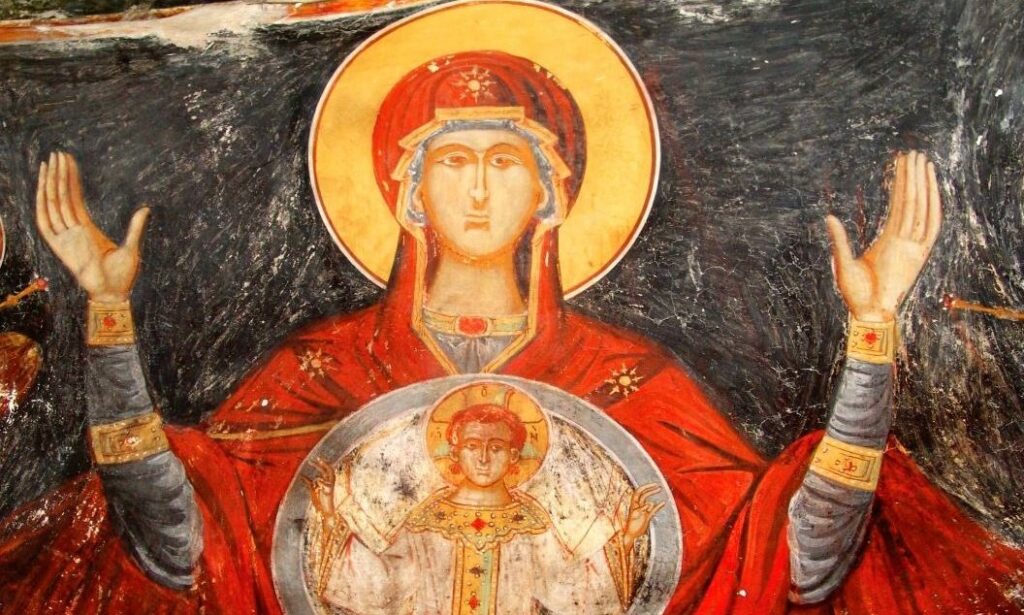The period of the Assumption of Mary is particularly significant for the Orthodox Church as it focuses on the Virgin Mary. With reverence and compunction, chanted for 15 days, the faithful hurry to church to sing the Small and Great Supplicatory Canons – before the great feast of the Dormition of the Most Holy Theotokos – glorifying the mother of Christ. This is a period where the faithful, with pain in their souls, turn to the mother of Christ for comfort.
Read: When the Assumption fast began and what we traditionally eat
To avoid monotony, churches alternate between chanting the Small and Great Supplication. Only during the evening services of Saturdays and the feast of the Transfiguration of the Lord are the Supplications to the Virgin Mary not chanted, because their content is mournful and supplicatory and does not align with the joyful character of these festive hymns.
Supplications to the Virgin Mary: What they symbolize
Beyond the Assumption period, however, the Small Supplication especially is chanted frequently, “in every circumstance and affliction of the soul,” either in sacred temples or at home, by the faithful who wish to entreat the Theotokos through it and invoke the intercession of the Most Gracious.
The Supplications to the Virgin Mary (Small and Great Supplication) are services that have moved and continue to move millions of Orthodox Christians throughout the centuries in a unique way. No one doubts the miraculous intervention of the Virgin Mary in our lives, who is “our unashamed protection” and “our unwavering hope.” Although she “departed from earth to heaven,” she did not abandon our earth. She continuously conveys our fervent supplications and entreaties “to her Son and God.” She does not overlook our supplicatory voices, she is not indifferent, she understands our pain and anguish and “comes quickly to our aid.”
What is the difference between the Small and Great Supplication
The distinction between the Small and Great Supplications is due exclusively to their extent, the length of the troparia. The troparia of the Small Supplication are shorter and more concise than those of the Great Supplication.
The Small Supplication is a poem by an unknown hymnographer, who according to some was called Theosteriktos and was a monk, while according to others was Theophanes. It appears, however, that this concerns the same person who became a monk and was renamed from Theophanes to Theosteriktos. The Great Supplication is the work of Theodore II, the Duke, Emperor of Nicaea, called Laskaris, who lived around the middle of the 13th century and is much later than Theosteriktos the Monk.
Simultaneously with the Supplications to the Virgin Mary, from August 1 to August 14, we fast in honor of the Virgin Mary and for our souls, strictly, obeying God’s commandment for fasting and because together with prayer, these are the most powerful weapons of Christians in the struggle against evil and sin. The Small and Great Supplicatory Canon to the Most Holy Theotokos as well as the Salutations to the Dormition of the Theotokos.




